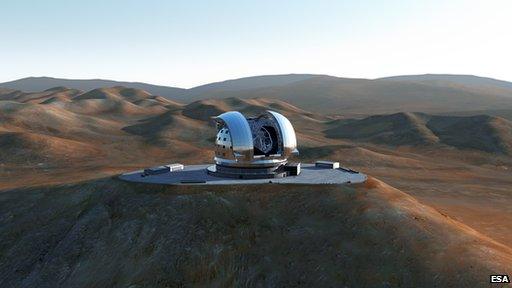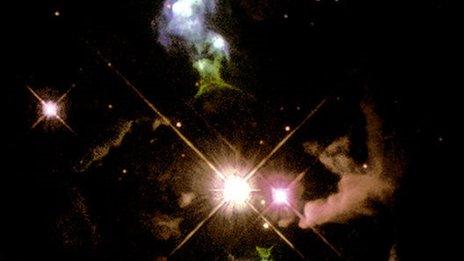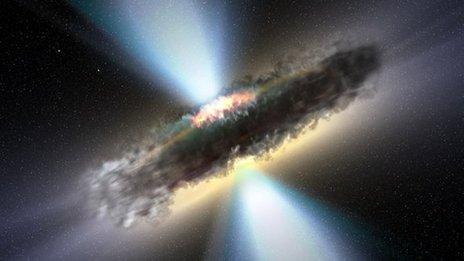Building the biggest eye on the sky
- Published

Artist's impression of the European Extremely Large Telescope (E-ELT) on Cerro Armazones
Plans for one of the world's largest (and most prosaically named) scientific instruments - the European Extremely Large Telescope, external - should take a major step forward today when the organisation overseeing its development meets to approve interim funding for the project.
The European Southern Observatory's Council will consider a package of measures, including approval for some elements of the telescope that could take years to construct and building an access road up the side of a mountain in Chile, this afternoon.
Speaking ahead of the meeting the ESO's Director General Tim de Zeeuw suggested the omens were good for both the interim package and final approval of the 1.1 billion euro project in 2012.
"We are getting close to the target where many of the member states will be able to say not only that they want to be part of this project but also that they have the money. I'm hopeful that the Council can take the final decision in the course of 2012 and unleash the full project".
It's a prospect that has the astronomical community in a state of high excitement. With a main mirror nearly 40 metres in diameter the E-ELT is five times bigger than anything in existence today. According to Dr Isobel Hook, who chairs the E-ELT science working group, the telescope will offer an unprecedented view of the cosmos.
Tom Feilden speaks to scientists working on the the European Extremely Large Telsecope to find out how it will work
"The main improvement with this telescope over anything that's gone before is its size. The huge area allows you to collect light from much fainter more distant objects, while the diameter is what gives you the superb resolution - the sharpness of the images".
Such extravagant claims about the game-changing potential of new scientific instruments are easily - and often - made, but the step change in the power of astronomical observation the E-ELT represents is of the same magnitude as the leap from the naked eye to the first telescopes used by Galileo and Thomas Harriot 400 years ago.
"Just think what we learnt from those first observations" says project scientist Roberto Gilmozzi, "seeing the stars in the Milky Way, seeing the craters on the moon, seeing the moons around Jupiter. It changed our whole view of the Universe."
If the E-ELT can achieve even a fraction of that game-changing potential it will be well worth the money.
- Published4 November 2011

- Published28 October 2011

- Published5 December 2011
